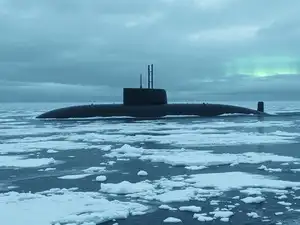South Korean Submarines: Rising Power Beneath the Waves
South Korean submarines are quickly gaining recognition around the world. As naval defense demands grow, South Korea's cutting-edge technology and competitive pricing have positioned it as a major player in the submarine market. In this article, we'll explore the technology behind South Korean submarines, their impact on global defense, and why countries like Canada are considering them over traditional Western options.

South Korean Submarines: Advanced Technology Meets Affordability
One of the defining features of South Korean submarines is the blend of innovation and value. The KSS-III, in particular, stands out as a modern diesel-electric submarine designed for stealth and endurance. It boasts an air-independent propulsion system, which allows it to stay submerged for up to three weeks without surfacing. This technological edge makes it ideal for operations in challenging environments, from the vast Arctic waters to crowded coastal regions.
In terms of armament and sensor capability, the KSS-III is equipped with vertical launch systems, advanced sonar arrays, and the capacity to carry heavy torpedoes and cruise missiles. This versatility enhances both offensive and defensive operations for navies adopting the platform.
International Demand and Major Export Deals
South Korea's defense industries, such as Hanwha Ocean and Hyundai Heavy Industries, have expanded their reach far beyond Asia. Recent years have seen growing interest from Europe, the Middle East, and North America.
One notable example is Canada's consideration of South Korean submarines as part of a multibillion-dollar military modernization effort. Experts say the South Korean proposal includes four KSS-III submarines, alongside artillery and armored vehicles, with the promise to deliver the first units by 2035—much earlier than other contenders.
The Economic Times reports that the deal is valued at up to $24 billion. The offer also includes establishing maintenance facilities in Canada, which would provide local jobs and technology transfer, further boosting bilateral ties.
Outpacing Competitors in the Defense Market
South Korean defense exports are not limited to submarines. Companies like Hanwha and Hyundai Heavy Industries have secured contracts to supply artillery systems, armored vehicles, and even fighter jets to countries across Europe, Australia, and the Middle East.
An in-depth feature from the Eurasian Times highlights how South Korea is undercutting traditional Western defense giants while offering cutting-edge capabilities. For example, the KSS-III submarines not only cost less than US-made Virginia-class subs, but also offer quicker delivery and more flexible partnership terms. This has made South Korean submarines an attractive option for buyers seeking both value and performance.
Shaping Regional and Global Security
With a goal of becoming the world's fourth-largest arms exporter by 2027, South Korea’s advancements in submarine technology are reinforcing its status in global defense. Submarines like the KSS-III are now key assets in South Korea's naval modernization and export strategy. As more countries look to bolster their maritime security, South Korean submarines are poised to play an even larger role on the international stage.
Conclusion: A New Era for Submarine Technology
South Korean submarines combine reliability, advanced features, and cost-effectiveness. Their growing acceptance is reshaping the global naval landscape. As nations reevaluate their defense needs in a rapidly changing security environment, the rise of South Korea’s submarine industry offers new solutions and partnership opportunities. For those watching trends in military technology, South Korean submarines are a force to watch in the coming decade.